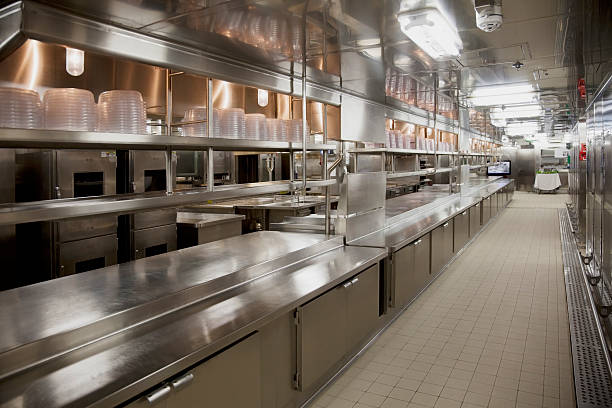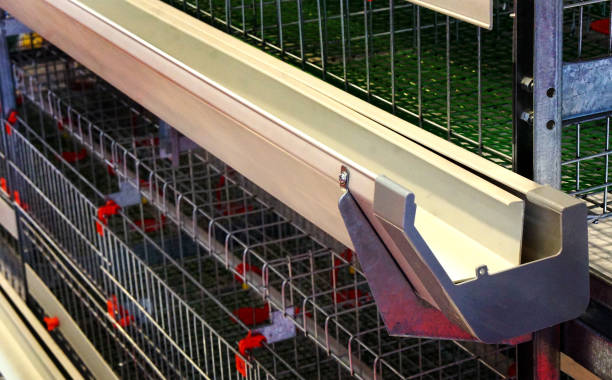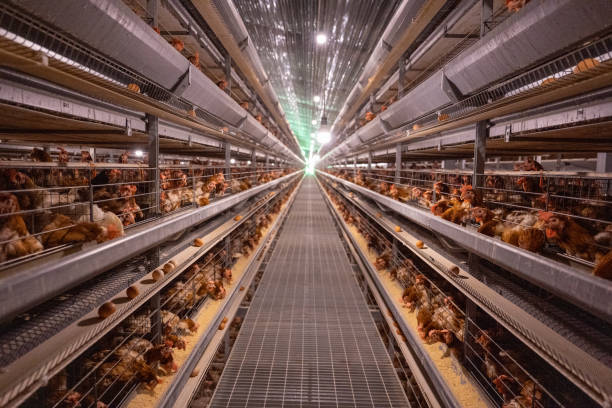
Developing a Realistic Brooder Cage Business Plan: A Cost Analysis for African Poultry Farmers
Developing a Realistic Brooder Cage Business Plan: A Cost Analysis for African Poultry Farmers
The rising demand for poultry products in Africa presents a substantial opportunity for farmers. However, starting a poultry farming business, particularly focusing on broiler production using brooder cages, requires careful planning and a thorough understanding of the costs involved. This article provides a comprehensive cost analysis framework to help African poultry farmers develop a realistic brooder cage business plan, maximizing profitability and sustainability.
Understanding the Brooder Cage System

Before diving into cost analysis, it is important to comprehend the advantages of using brooder cages. Brooder cages are specialized enclosures designed to house chicks from day-old to several weeks old. They offer numerous benefits compared to traditional floor brooding systems, including:
Improved Hygiene: Elevated cages minimize contact with manure, reducing the risk of disease outbreaks and improving overall chick health.
Better Temperature Control: Cages facilitate efficient heating and ventilation, ensuring optimal brooding temperatures critical for chick development.
Reduced Mortality: Easier monitoring and management in cages lead to early detection of sick chicks and timely intervention, reducing mortality rates.
Higher Stocking Density: Cages allow for higher stocking density per square meter compared to floor brooding, maximizing space utilization.
Easier Management: Feeding, watering, and cleaning are simplified, reducing labor costs and improving efficiency.
Key Cost Components of a Brooder Cage Business Plan
Developing a robust business plan necessitates a detailed breakdown of all associated costs. These costs can be broadly classified into fixed and variable costs.
Fixed Costs (Initial Investment)
Fixed costs are one-time expenses incurred at the start of the business. They are independent of the number of chicks being brooded.
Brooder Cage Purchase: This is often the most significant initial investment. The cost of brooder cages varies depending on the size, material, design, and manufacturer. Research different suppliers, compare quotes, and select cages that meet your specific needs and budget. Livi Machinery, for instance, offers a range of durable and efficient brooder cages specifically designed for African poultry farmers. Consider factors like cage capacity, ease of cleaning, ventilation features, and material quality (galvanized steel is recommended for longevity and corrosion resistance). Prices can range from a few USD per chick space to significantly higher for more sophisticated, automated systems.
Land and Building: If you do not already own suitable land and a building, these will be major expenses. The size of the building depends on the number of chicks you intend to brood. Factor in space for the brooder cages, storage of feed and equipment, and a workspace. Consider locally available building materials to minimize costs. Lease options can be explored to reduce the initial capital outlay.
Heating System: Chicks require a consistent and controlled temperature, especially during the first few weeks. Heating systems can include gas brooders, electric heaters, or infrared lamps. The choice depends on the availability and cost of energy in your area. Calculate the heating requirements based on the size of the brooding area and the local climate.
Ventilation System: Proper ventilation is crucial for removing ammonia and moisture, ensuring good air quality, and preventing respiratory diseases. Invest in fans and ventilation controls that are adequate for the size of the building. Natural ventilation can be supplemented with mechanical ventilation.
Feeding and Watering Equipment: Purchase feeders and drinkers appropriate for chicks. Consider nipple drinkers or trough feeders that minimize water wastage and feed spillage. The number of feeders and drinkers needed depends on the stocking density. Automatic feeding and watering systems can reduce labor costs but require a higher initial investment.
Lighting System: Provide adequate lighting for the chicks. LED lights are energy-efficient and provide good illumination. A timer can be used to regulate the lighting schedule.
Waste Management System: Plan for the proper disposal of manure and waste. This may involve constructing a composting facility or arranging for regular removal by a waste management company.
Water Source and Storage: Ensure a reliable source of clean water. This may involve drilling a borehole, connecting to a municipal water supply, or collecting rainwater. Storage tanks are necessary to ensure a continuous supply of water.
Generator (Optional): A generator provides backup power in case of electricity outages, preventing disruptions to heating, ventilation, and lighting. This is particularly important in areas with unreliable power supply.
Miscellaneous Equipment: This includes items such as thermometers, hygrometers, scales, cleaning supplies, and protective clothing.
Permits and Licenses: Obtain all necessary permits and licenses from local authorities.
Variable Costs (Recurring Expenses)
Variable costs are expenses that fluctuate based on the number of chicks being brooded and the duration of the brooding period.
Day-Old Chicks: This is a significant variable cost. Source chicks from reputable hatcheries to ensure good quality and health. Compare prices from different suppliers. Consider factors like breed, vaccination status, and mortality rate.
Feed: Feed is the largest variable cost in broiler production. Use a balanced starter feed formulated for chicks. The amount of feed consumed depends on the breed, age, and environmental conditions. Always buy high-quality feed from reliable suppliers. Consider bulk purchasing to negotiate better prices.
Medications and Vaccines: Implement a vaccination program to protect chicks from common diseases. Keep medications on hand to treat any health problems that may arise. Consult with a veterinarian to develop a preventative healthcare plan.
Water: Water is essential for chick growth and survival. Ensure a continuous supply of clean water.
Electricity: Electricity is used to power heating, ventilation, lighting, and other equipment.
Labor: Labor costs depend on the number of workers employed and their wages. Consider the costs of hiring, training, and paying workers. Automatic systems can reduce labor costs but increase initial investment.
Fuel (for Heating): If using gas brooders or other fuel-based heating systems, factor in the cost of fuel.
Waste Disposal: Costs associated with disposing of manure and waste.
Packaging and Transportation: If selling chicks to other farmers, factor in the cost of packaging and transportation.
Marketing and Advertising: Costs associated with promoting your business and attracting customers.
Contingency: Allocate a percentage of your budget (e.g., 5-10%) for unexpected expenses such as disease outbreaks or equipment breakdowns.
Developing a Cost Analysis Spreadsheet
To effectively analyze costs, create a spreadsheet that lists all fixed and variable costs. For variable costs, estimate the cost per chick or per batch. The spreadsheet should include the following columns:
Item Description: A detailed description of the cost item
Unit: The unit of measurement (e.g., number of cages, kilograms of feed, kilowatt-hours of electricity)
Quantity: The quantity required
Unit Cost: The cost per unit
Total Cost: The total cost for the item (Quantity x Unit Cost)
Frequency: How often the expense happens
Total Annual Cost: The annual cost of the expense
Example Cost Analysis:
Let’s imagine a small-scale farmer in Zambia planning to start a brooder cage business with a capacity of 500 chicks per batch.

Fixed Costs:
item, unit, quantity, unit cost (USD), total cost (USD), frequency, total annual cost (USD)
Brooder Cages, unit, 10, 100, 1000, once, 1000
Land and Building Rental (Annual), year, 1, 500, 500, once, 500
Heating System (Gas Brooder), unit, 1, 200, 200, once, 200
Ventilation Fans, unit, 2, 50, 100, once, 100
Feeders and Drinkers, unit, 20, 5, 100, once, 100
Lighting System, unit, 5, 10, 50, once, 50
Miscellaneous Equipment, lot, 1, 50, 50, once, 50
Total Fixed Costs (Year 1): 2000
Variable Costs (per Batch):
item, unit, quantity, unit cost (USD), total cost (USD), frequency, total annual cost (USD)
Day-Old Chicks, chick, 500, 0.5, 250, 6, 1500
Feed (Starter), kg, 250, 0.8, 200, 6, 1200
Medications and Vaccines, lot, 1, 50, 50, 6, 300
Electricity, kWh, 100, 0.1, 10, 6, 60
Labor, man-day, 15, 5, 75, 6, 450
Waste Disposal, lot, 1, 20, 20, 6, 120
Total Variable Costs (per Batch): 605

Total Variable Costs (Annually): 3630
Total Costs (Year 1): 5630 (2000 + 3630)
Analyzing Revenue and Profitability
After estimating costs, project your revenue. This involves estimating the number of chicks you can sell, the selling price per chick, and the number of batches you can produce per year.
Number of chicks: Assume that out of 500 chicks, 475 survive the brooding period.
Selling price: Assume a selling price of 1.5 USD per chick.
Number of Batches: Assume that the farmer can produce 6 batches each year.
Total Revenue (Annually): 475 1.5 6 = USD 4275
Profitability (Year 1): Total Revenue – Total Costs = 4275 – 5630 = -1355 USD
In this scenario, the business is making a loss in the first year, largely due to the initial investment. However, future years should be profitable. After year 1, the farmer won’t need to cover the cost of brooder cages again.
Profitability (Year 2 onwards): 4275 (Revenue) – 3630 (Variable Costs)= USD 645
From year 2 onwards, the poultry farmer will make a profit of 645 USD annually, providing the assumptions hold.
Strategies for Cost Reduction
Negotiate with Suppliers: Get quotes from multiple suppliers for chicks, feed, and equipment. Negotiate for better prices or discounts.
Bulk Purchasing: Buy feed and other supplies in bulk to take advantage of lower prices.
Efficient Feed Management: Minimize feed wastage by using appropriate feeders and managing stocking density.
Energy Efficiency: Implement energy-saving measures such as using LED lighting, insulating the building, and optimizing ventilation.
Disease Prevention: Implement a strict biosecurity program to prevent disease outbreaks. This will reduce the need for medications and minimize mortality rates. Some biosecurity measures that can be taken are controlling access to the poultry house, disinfecting equipment, and enforcing hygiene standards.
Optimize Labor: Streamline operations to reduce labor costs. Consider automating certain tasks such as feeding and watering.
Explore Local Materials: Use locally available building materials to reduce construction costs.
Financial Planning: Effectively manage cash flow, seek financing for equipment, and ensure timely payments to suppliers.
Conclusion
Developing a realistic brooder cage business plan requires careful cost analysis and revenue projections. By understanding the key cost components and implementing strategies for cost reduction, African poultry farmers can maximize profitability and sustainability. Regularly review and update the business plan to reflect changes in market conditions, input costs, and production practices. Remember to seek advice from experienced poultry farmers, agricultural extension officers, and financial advisors to refine your business plan and increase your chances of success. While the initial investment may seem substantial, the long-term benefits of using brooder cages, combined with sound financial management, can lead to a profitable and rewarding poultry farming venture.
